

Table of contents
- Cladding the garden wall with natural stone
- granite
- quartz stone
- Marble
- slate
- Greening the garden wall
- Plant a hedge
- Let the wall grow
- plant joints
- Cladding the garden wall with wood
- Douglas fir (Pseudotsuga menziesii)
- Oak (Quercus)
- tropical wood
- Larch (Larix)
- processing of wood
- Cladding the garden wall with bamboo
Garden walls made of rustic bricks have a very special charm. But not every garden owner is blessed with such a property boundary. Gray, chunky concrete walls detract from the look and give off a drab appearance. The gardener would prefer to hide the masonry. Not a bad idea at all. Because in order to disguise a desolate garden wall, only a few materials and hardly any manual skills are required. These x possibilities help do-it-yourselfers who are looking for creative wall coverings.
Cladding the garden wall with natural stone
A clad garden wall made of natural stone makes a lot of impression, because at first glance you cannot see that it is just a narrow layer of the high-quality material. The do-it-yourselfer applies this about 2 to 3 cm thick. The following natural stones are ideal for cladding.
A notice:
When cladding with natural stone, the focus is on an elegant look. A rustic appearance is undesirable with this style. It is therefore important that the do-it-yourselfer applies the coating very evenly to avoid unevenness later on.
In general, natural stones are very expensive. There are significant price fluctuations among the different types. The large selection not only offers the customer the opportunity to choose a quite affordable rock, but also allows the optical adaptation to the rest of the garden design. Below are the advantages, disadvantages and suitability of the different rock types:
granite

Although the disadvantages outweigh the above list, granite's extreme hardness makes it a good choice for wall cladding. In addition, the natural stone has a wonderful shine that the do-it-yourselfer can always renew with simple polishing. With this property, granite fits perfectly into modern, noble-looking gardens.
Advantages
- unbeatable hardness
- very durable
- weatherproof
- withstands strong temperature fluctuations
Disadvantages
- high dead weight
- susceptible to frost
- not resistant to penetrating moisture
- not fireproof
- very expensive
- prone to scratch marks
quartz stone
Quartz stone has a homogeneous, fine-pored structure and is therefore ideal for grinding into shape. At the same time, this property also ensures high abrasion. With its metallic gray sheen, quartz stone looks very elegant and is a cheap alternative to expensive granite in modern gardens.
Advantages
- velvety surface with a glossy feel
- can be processed well
- fits to block steps and steles
- largely frost-resistant
- sure-footed
Disadvantages
- prone to scratches
- high risk of wear and tear
Tip:
Light granite or quartz stone create a Mediterranean look.
Marble
Many are more familiar with marble from interior design, for example as a window sill or kitchen unit. Just as noble as the shiny natural stone looks indoors, it also unfolds a high-quality look as a garden wall. Marble harmonises very well with noble plants such as roses.
Advantages
- handsome shades and countless color variations
- water resistant
- easy to clean
Disadvantages
- requires regular polishing
- expensive
- acid sensitive
slate
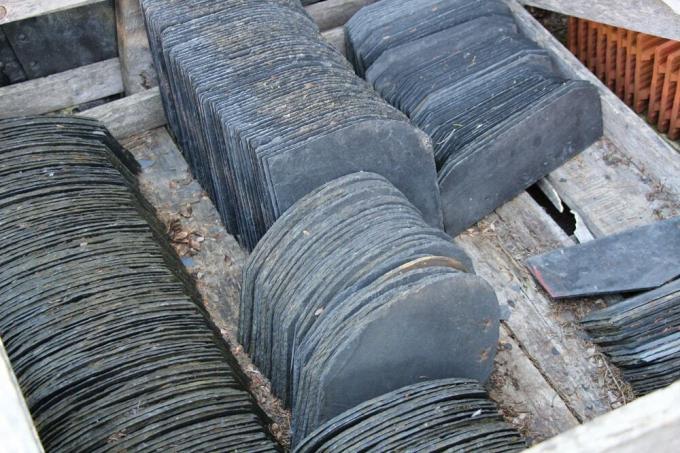
The dark, anthracite-colored slate has a slight shimmer. Many people associate the material with high standards. Slate goes particularly well with elements made of concrete, metal or glass.
Advantages
- weather resistant
- looks classy
- good cleavage
- water repellent
Disadvantages
- susceptible to corrosion
- prone to scratching
Tip:
In order to maintain the shine, the do-it-yourselfer rubs his slate wall regularly with linseed oil.
Greening the garden wall
If you want to save yourself work and costs, go for the natural look and green your garden wall. It does not necessarily have to be the classic ivy. Tree nurseries and specialist shops offer numerous, sometimes exotic, plants that feel at home on a wall. The only disadvantages of this method are the pruning required depending on the choice of plants and the time it takes for an opaque wall to grow.
Plant a hedge
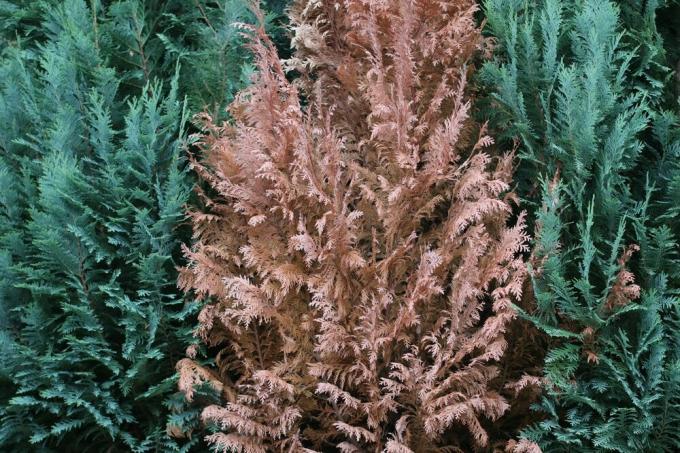
Planting a hedge on both sides is a good idea for particularly unstable garden walls, which are unlikely to be able to withstand heavy vegetation. The plants already have a certain height (unless the do-it-yourselfer raises his plants himself), so that the latter disadvantage does not apply.
Examples of suitable plants are:
- yew (tax)
- Thuja (thuja)
- false cypress (Chamaecyparis)
- liguster (ligustrum)
- holly (Ilex)
- medlar (Photinia)
- boxwood (Buxus)
- European beech (Fagus sylvatica)
Tip:
To loosen up the garden hedge, it is advisable to plant a shrub or colorful blooming flowers in isolated places.
Let the wall grow

The climbing of a wall provides variety, especially in rock gardens. It is important to ensure that the plants tolerate drought and do not “eat” into the rock. The do-it-yourselfer should also consider the location requirements (sunny or shady).
Here is a small selection of worthwhile climbing plants:
- climbing roses (Pink)
- climbing hydrangea (Hydrangea petiolaris)
- Clematis (clematis)
- Wisteria (wisteria)
- trumpet flower (Campsis)
- Wine (Vitis vinifera)
plant joints
A third option, which requires a little more effort, is to widen the joints. The do-it-yourselfer then fills these with humus soil and lets green plants grow out of them. Ferns are very suitable for this variant.
Cladding the garden wall with wood
With a wooden cladding, the unsightly rock garden wall is transformed into a natural wooden fence in no time. The design options here are very diverse. Whether vertical or horizontal, filigree or rustic. These types of wood are particularly suitable, and their advantages and disadvantages are shown below:
Douglas fir (Pseudotsuga menziesii)

Advantages
- good stamina
- weather resistant
- resistant to fungi
- good strength and elasticity properties
Disadvantages
- light, reddish wood darkens quickly
Oak (Quercus)
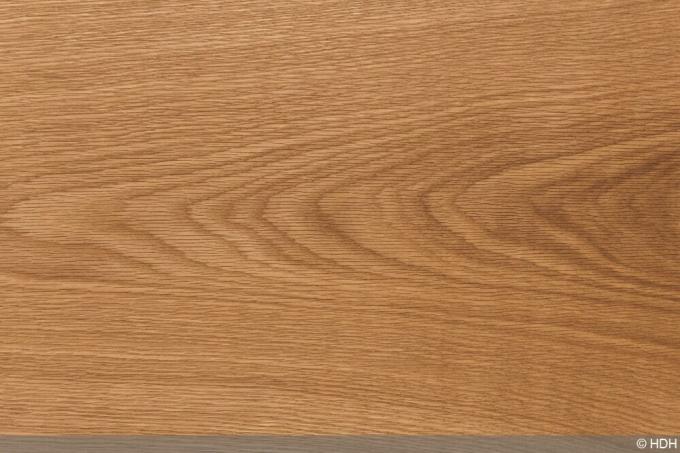
Advantages
- many color shades
- optionally with grain
- good elasticity
- can be easily split
- water repellent
- durable
Disadvantages
- heavy and hard
- darkens quickly
A notice: Greyish oak wood indicates a high degree of hardness.
tropical wood
Tropical woods include species such as teak, bangkirai, meranti, ebony and bongossi.
Advantages
- handsome grain
- durable
Disadvantages
- environmentally harmful extraction methods
- susceptible to fungal diseases
- expensive
Larch (Larix)

Advantages
- acid resistant
- pleasant smell of resin
- low risk of cracking
- resistant to insects and fungi
Disadvantages
- resin removal is required before staining or painting
- darkens quickly
- Differences in quality depending on origin
processing of wood
In order to attach the wooden cladding, it is first necessary to screw stable wooden panels to the stone wall as load-bearing elements. The choice of orientation (vertical or horizontal) should depend on the weather side.
Cladding the garden wall with bamboo
One of the easiest methods is to get bamboo mats from the hardware store and attach them to the garden wall. Even for several meters, the do-it-yourselfer pays little money here. The look spreads an Asian flair. However, the do-it-yourselfer has to replace the bamboo mats after a few years, as the material is worn down by wind and precipitation.
A notice:
If you want to save money, you can also get plastic imitations in the hardware store, which can be attached to the garden wall in just a few simple steps. Although most of these products look deceptively real from a distance, on closer inspection the fake is revealed in the end. If you choose this variant, you should definitely pay attention to high-quality workmanship. Otherwise, the disguise quickly looks cheap. Expensive plastic, in turn, also has a proud purchase price.
 Home editorial office
Home editorial office
Learn more about garden decor

How to: Make patina yourself | Perfect rust look
Rust is actually a very unpopular phenomenon on tools, vehicles and in the garden, but patina has become a trend in recent years. We show how you can create the perfect rust look yourself.
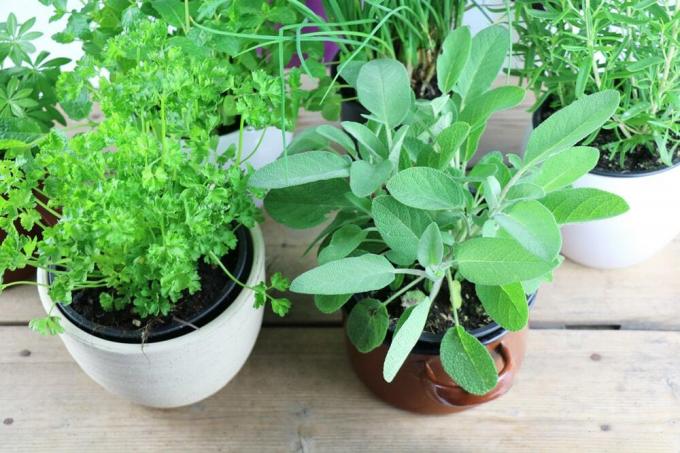
Make signs for the herb garden yourself: Make herb signs
You can get signs for the most common herbs in stores, but home-made herb signs have much more charm and can be labeled individually. Thanks to meaningful labeling, mix-ups in your herb garden are now a thing of the past.
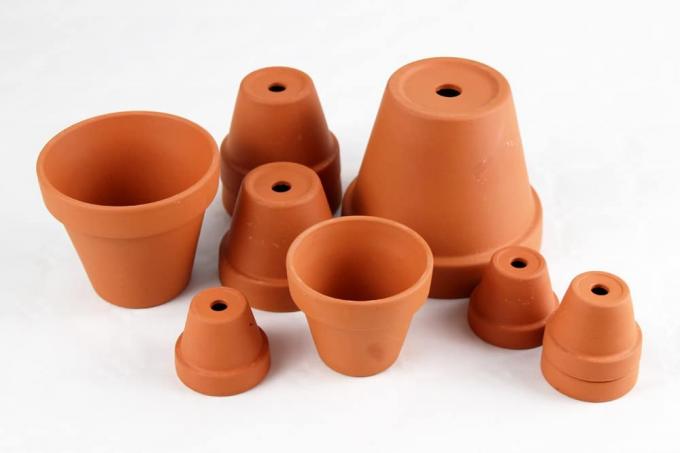
Terracotta pots: how to clean flower pots - care and cleaning
If white limescale and verdigris spoil your terracotta pots, you can solve the problem with simple home remedies. This guide is packed with practical tips for caring for Mediterranean clay flower pots. Your old terracotta pots will shine in new splendor.

Plant zinc tub - suitable plants
A beautiful old zinc tub makes a very good decoration for the terrace or garden. In the past, these tubs were used in households to wash clothes or bathe small children.

These 3 software and 5 online garden planners are free?
On the way to the dream garden, virtual garden planning gives your wishes unlimited scope. You don't have to spend any money to visualize and skilfully plan your green paradise. These 3 software and 5 online garden planner are free.

Remove tree stump - burn out or mill?
If a tree was felled on a plot in front of a family house, the stump must disappear because he has most of the other planting plans on the already not huge property adversely affected.



